#Freer Gallery
Explore tagged Tumblr posts
Text

April 30, 2023
A Virgin, Abbott Henderson Thayer
The National Museum of Asian Art, Washington, DC
#photography#painting#Abbott Henderson thayer#National museum of Asian art#Smithsonian#smithsonian museum of asian art#freer Gallery#washington dc#district of columbia#dc
10 notes
·
View notes
Text




National Museum of Asian Art, Washinton, D.C.
https://thegirlwholeftthefridgeopen.com
0 notes
Text
youtube
Trees 雑木林図屏風, mid 17th century
Master of I-nen Seal (1600-1630), Rinpa School
Edo period, Japan
Ink, color and gold on paper
H x W: 154 x 357.8 cm (60 5/8 x 140 7/8 in)
At least eight varieties of trees have been identified in the screens F1962.30-31, reflecting a growing interest at that time among educated Japanese in natural history classification. Yet even with careful attention to botanical accuracy, the painter offers no suggestion of spatial relationship between the trees. Indeed, the real subject of the painting is jarring contrast: realism in form but not space, dramatic asymmetry, and bold color contrast. The circular vermilion seals, reading "I'nen" and seen on the extreme left and right panels of this screen set, were used by the Kyoto painter Tawaraya Sotatsu (active circa 1600-1640) and by several generations of his followers. Sotatsu's follower, Sosetsu (active 1630-50) is a strong candidate as the user of these "I'nen" seals. He migrated from Kyoto to serve Lord Maeda, head of the family who ruled Kaga Province, north of Kyoto; these screens were likely commissioned for the Maeda family. Collection of the Freer Gallery of Art, National Museum of Asian Art, Smithsonian

#Rinpa school#Japanese#art#art history#17th century#Edo period#Master of I-nen Seal#Smithsonian#Freer Gallery#National Museum of Asian Art#painting#ink#gold#colour#gilding#cultural amalgam#botany#illustration#Youtube
9 notes
·
View notes
Text

Title: God of Thunder (Raijin) Artist: Katsushika Hokusai (Japanese, 1760-1849) Date: after 1834 Genre: religious art (Shinto art) Period: Edo Medium: hanging scroll (ink and color on paper) Dimensions: 226.8 cm (89.2 in) high x 67.7 cm (26.6 in) wide Location: Freer Gallery of Art, Washington, DC
#art#art history#Hokusai#Katsushika Hokusai#Asian art#Japan#Japanese art#East Asia#East Asian art#religious art#Shinto#mythological art#Japanese mythology#Raijin#hanging scroll#ink and color on paper#Edo period#19th century art#Freer Gallery of Art#Smithsonian Institution
65 notes
·
View notes
Text
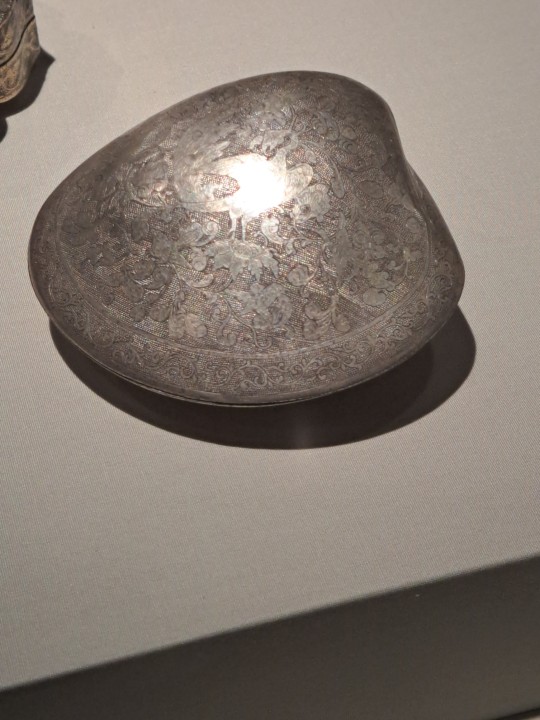
BEHOLD. the world's oldest clamshell compact.
128 notes
·
View notes
Text

THEE Princess from the Land of Porcelain, from a road trip to Washington DC I just got back from.
#she and the rest of the peacock room are in the freer gallery at the smithsonian!#art#j.a.m. whistler#james abbott mcneill whistler#japonisme#orientalism#personal#travel
10 notes
·
View notes
Text
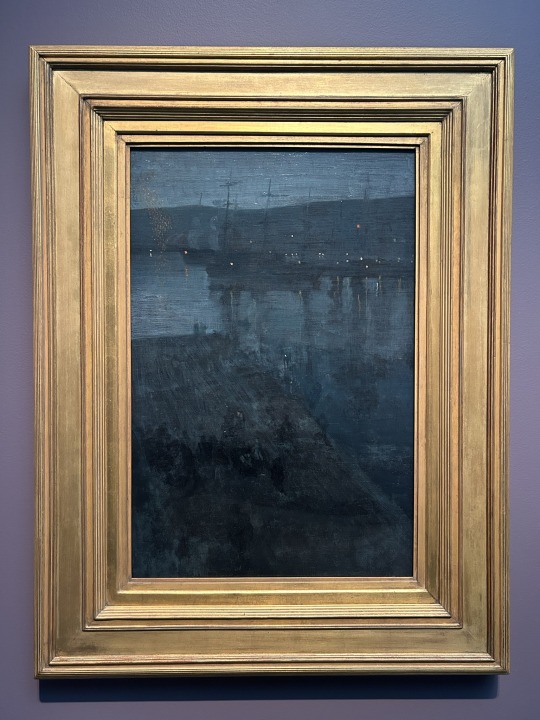
James McNeill Whistler.
18 notes
·
View notes
Text

James McNeill Whistler. The Ocean Wave. 1883-1884. National Museum of Asian Art, Washington, DC.
#james mcneill whistler#the ocean wave#national museum of asian art#smithsonian#smithsonian institution#freer gallery of art#ocean#waves#painting#1800s#1880s#watercolor#watercolour#watercolor on paper#watercolour on paper#because oceans#because seas#csi art#science nerds#vintage#art#19th century
2 notes
·
View notes
Text

Arthur M. Sackler Gallery, Freer Gallery and Washington Monument beyond, National Mall, Washington, DC 2015.
What OxyContin profits can pay for!
#urban landscape#museums#asian art#sackler gallery#freer museum#national mall#washington dc#2015#photographers on tumblr
6 notes
·
View notes
Text
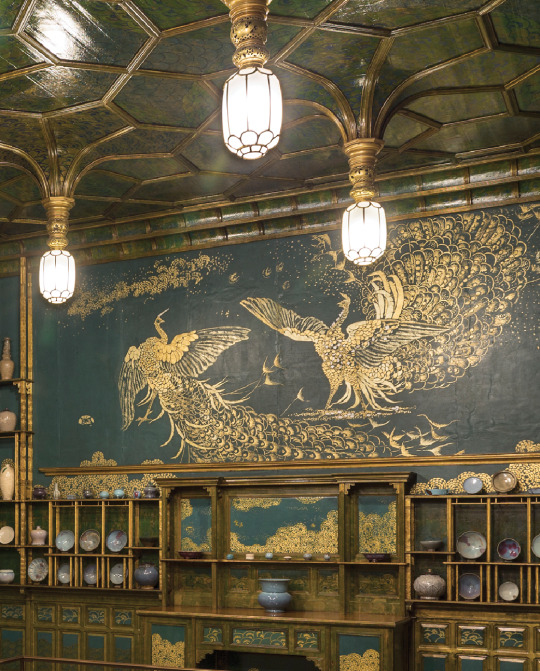


The Peacock Room At the Freer Gallery of Art, Smithsonian Institution
By Robert Haywood
5 notes
·
View notes
Photo

Autumn Moonlight on Dongting Lake (庭秋月圖), early 13th century
Xia Gui 夏珪 (active ca. 1195-1230)
Song dynasty, China
Ink on silk
190.9 x 109.6 cm (75 3/16 x 43 1/8 in)
Collection of the Freer Gallery of Art, National Museum of Asian Art

Autumn Moonlight on Dongting Lake, Southern Song dynasty (ink on silk) by Xia Gui ink on silk Freer Gallery of Art, Smithsonian Institution, USA
#Xia Gui#Chinese#art#art history#13th century#painting#landscape#National Museum of Asian Art#Freer Gallery of Art#mid autumn festival#中秋節
6 notes
·
View notes
Text

Kyoto ware incense box in the shape of a crouching rabbit by Japanese potter Nonomura Ninsei, created during the Edo period (mid-17th century).
Smithsonian's National Museum of Asian Art · Freer Gallery of Art
#japanese pottery#edo period#asian art#japanese art#17th century japan#kyoto ware#omuro ware#stoneware#nonomura ninsei#smithsonian#incense box#rabbit#museum finds#gallery#art history
4K notes
·
View notes
Text
[Hanfu · 漢服]Chinese Late Warring States period(475–221 BC) Traditional Clothing Hanfu Based On Based On Chu (state)Historical Artifacts

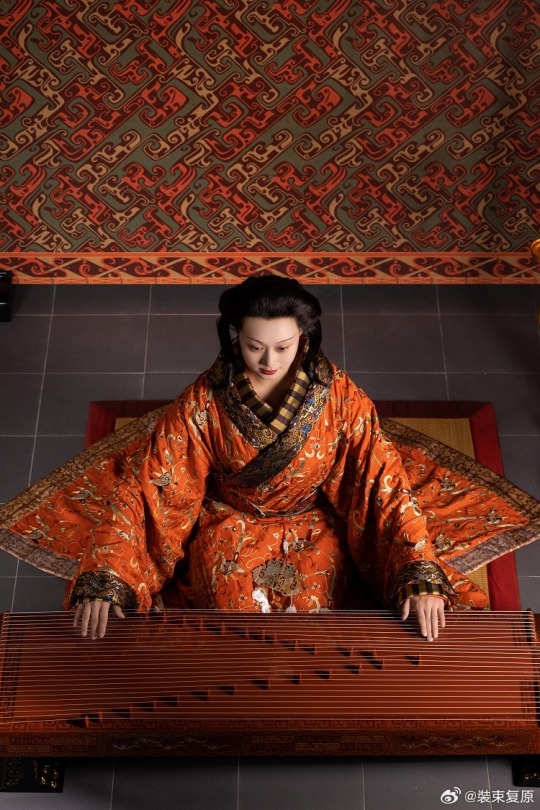

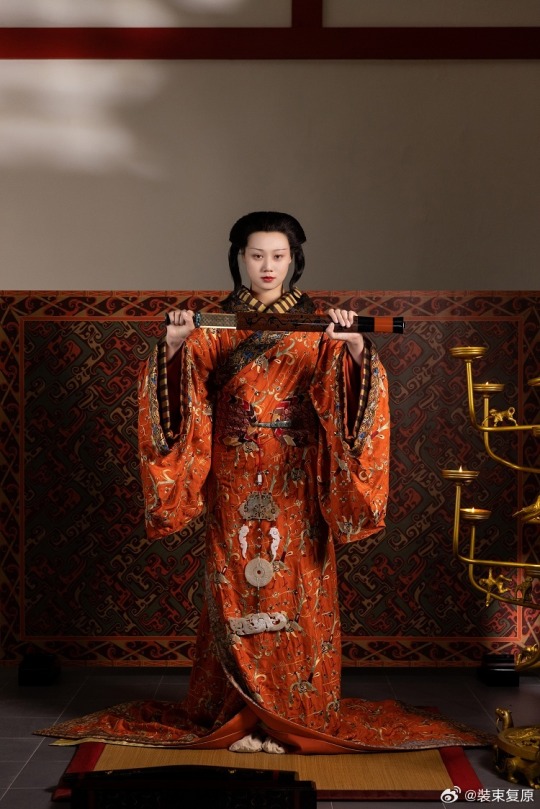
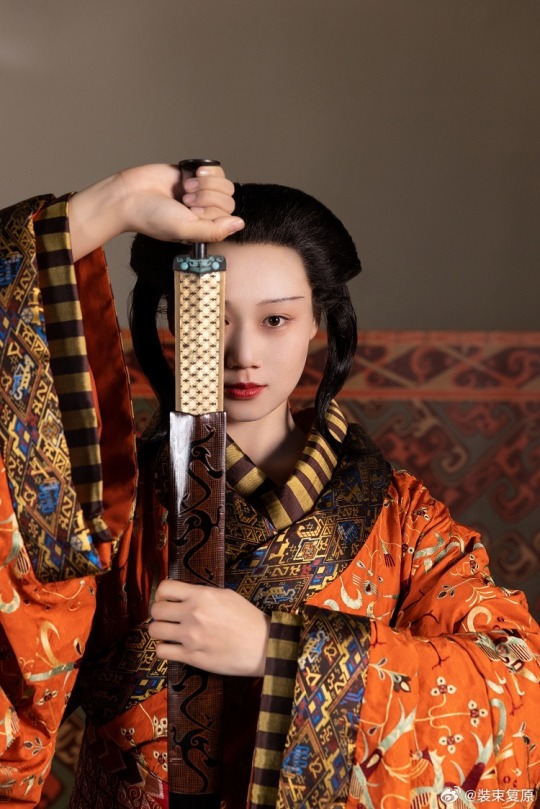
【Historical Artifact Reference】:
Late Warring States period(475–221 BC):Two conjoined jade dancers unearthed from Jincun, Luoyang,collected by Freer Museum of Art
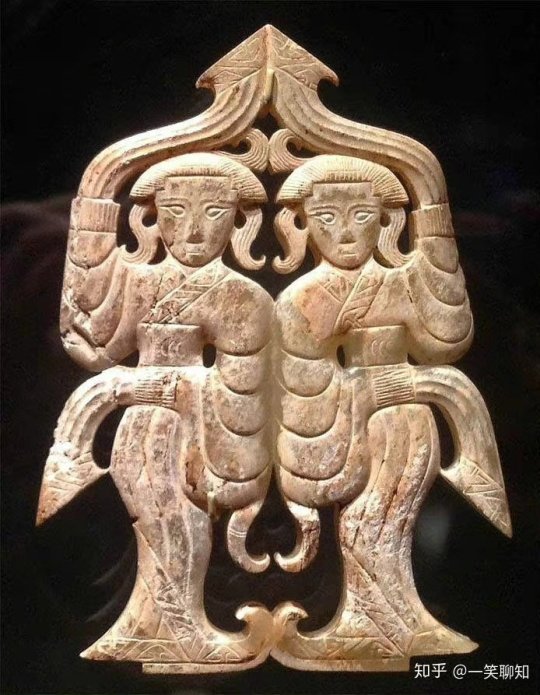
A similar jade dancer was also unearthed from the tomb of Haihunhou, the richest royal family member in the Han Dynasty, and was one of his treasures.
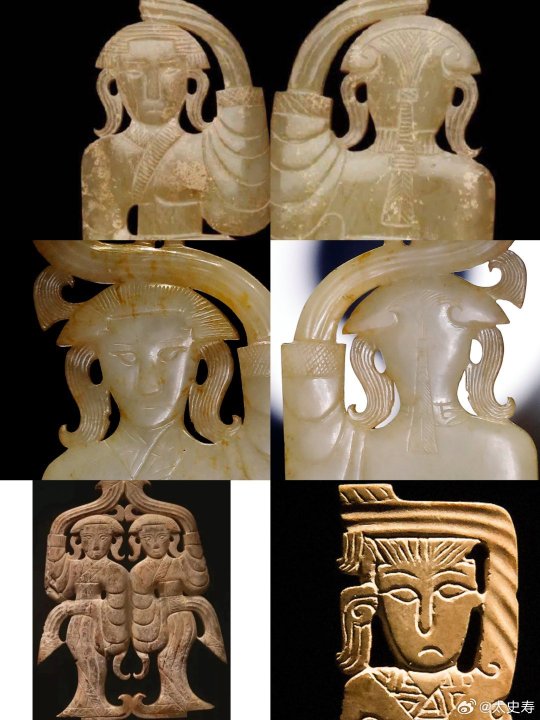
Warring States period, Eastern Zhou dynasty, 475-221 BCE,jade dancer by Freer Gallery of Art Collection.

Warring States period(475–221 BC)·Silver Head Figurine Bronze Lamp.Unearthed from the Wangcuo Tomb in Zhongshan state during the Warring States Period and collected by the Hebei Provincial Institute of Cultural Relics and Archaeology

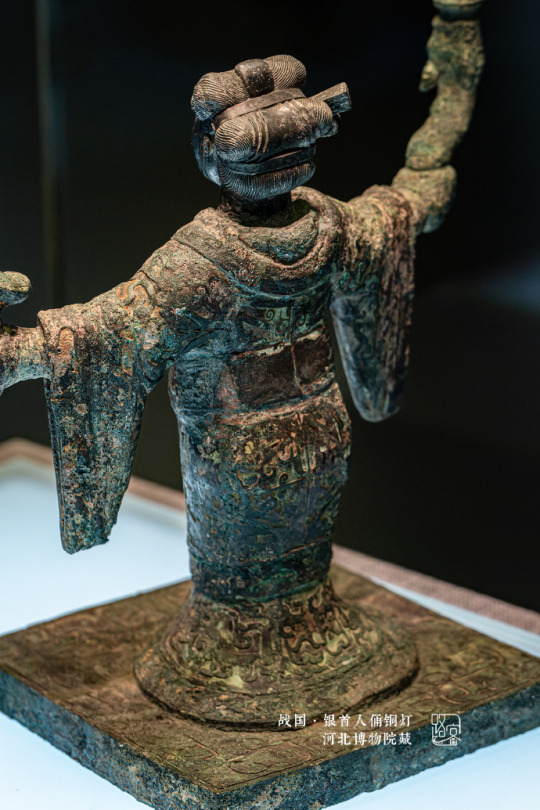
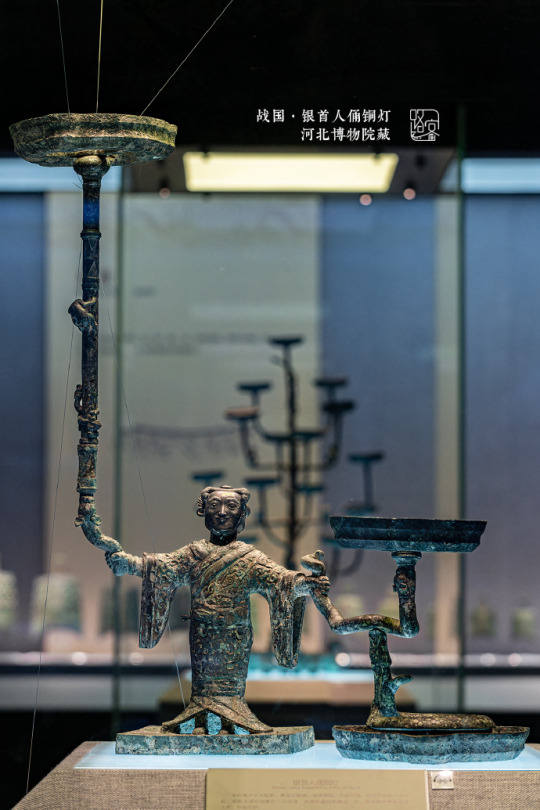
The figurine of a man dressed as a woman holds a snake in his hand, and 3 snakes correspond to 3 lamps.
Sword of Goujian/越王勾践剑:
The Sword of Goujian (Chinese: 越王勾践剑; pinyin: Yuèwáng Gōujiàn jiàn) is a tin bronze sword, renowned for its unusual sharpness, intricate design and resistance to tarnish rarely seen in artifacts of similar age. The sword is generally attributed to Goujian, one of the last kings of Yue during the Spring and Autumn period.
In 1965, the sword was found in an ancient tomb in Hubei. It is currently in the possession of the Hubei Provincial Museum.
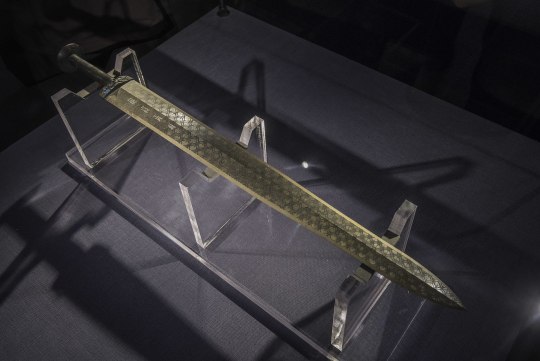
【Histoty Note】Late Warring States Period·Noble Women Fashion
The attire of noblewomen in the late Warring States period, as reconstructed in this collection, is based on a comprehensive examination of garments and textiles unearthed from the Chu Tomb No. 1 at Mashan, Jiangling, as well as other artifacts from the same period.
During the late Warring States period, both noble men and women favored wearing robes that were connected from top to bottom. These garments were predominantly made of gauze, silk, brocade, and satin, with silk edging. From the Chu Tomb No. 1 at Mashan, there were discoveries of robes entirely embroidered or embroidered fragments. The embroidery technique employed was known as "locked stitches," which gave the patterns a three-dimensional, lively appearance, rich in decoration.
The two reconstructed robes in this collection consist of an inner robe made of plain silk with striped silk edging, and an outer robe made of brocade, embroidered with phoenixes and floral patterns, with embroidered satin edging. Following the structural design of clothing found in the Mashan Chu Tomb, rectangular fabric pieces were inserted at the junction of the main body, sleeves, and lower garment of the robe. Additionally, an overlap was made at the front of the main body and the lower garment to enlarge the internal space for better wrapping around the body curves. Furthermore, the waistline of the lower garment was not horizontal but inclined upward at an angle, allowing the lower hem to naturally overlap, forming an "enter" shape, facilitating movement.
The layered edging of the collars and sleeves of both inner and outer robes creates a sense of rhythm, with the two types of brocade patterns complementing each other, resulting in a harmonious effect. Apart from the robes, a wide brocade belt was worn around the waist, fastened with jade buckle hooks, and adorned with jade pendants, presenting an elegant and noble figure.
The reconstructed hairstyle draws inspiration from artifacts such as the jade dancer from the late Warring States period unearthed at the Marquis of Haihun Tomb in Nanchang, and the jade dancer from the Warring States period unearthed at Jin Village in Luoyang. It features a fan-shaped voluminous hairdo on the crown, with curled hair falling on both sides, and braided hair gathered at the back. The Book of Songs, "Xiao Ya: Duren Shi," vividly depicts the flowing curls of noblewomen during that period. Their images of curly-haired figures in long robes were also depicted in jade artifacts and other relics, becoming emblematic artistic representations.
The maturity and richness of clothing art in the late Warring States period were unparalleled in contemporary world civilizations, far beyond imagination. It witnessed the transition of Chinese civilization into the Middle Ages. The creatively styled garments and intricate fabric patterns from the Warring States period carry the unique essence, mysterious imagination, and ultimate romanticism of that era, serving as an endless source of artistic inspiration.
--------
Recreation Work by : @裝束复原
Weibo 🔗:https://weibo.com/1656910125/O6cUMBa1j
--------
#chinese hanfu#Late Warring States Period#Warring States period(475–221 BC)#hanfu#hanfu accessories#chinese traditional clothing#hanfu_challenge#chinese#china#historical#historical fashion#chinese history#china history#漢服#汉服#中華風#裝束复原
279 notes
·
View notes
Text

Caprice in Purple and Gold: The Golden Screen, James McNeill Whistler, 1864
#art#art history#James McNeill Whistler#portrait#portrait painting#Tonalism#American art#19th century art#oil on panel#Freer Gallery of Art
109 notes
·
View notes
Text
Catered Audience- Pt. 2
Spencer Agnew x f!Reader
2.2k words
( ᴅᴍ ᴏʀ ᴄᴏᴍᴍᴇɴᴛ ғᴏʀ ᴛᴀɢ :] )
slow burn-ish, fluff, mutual pining, all that shit
part 1

‧₊˚ ✩°。⋆♡ ⋆˙⟡♡ ⋆˙⟡♡⋆。°✩˚₊‧♡‧₊˚ ✩°。⋆♡ ⋆˙⟡♡ ⋆˙⟡♡⋆。°✩˚₊‧
Spencer walked up to a wheezing Alex, wiping the sweat from his brow as a goofy grin spread across his face. He pulls the red hat off and tosses it at his friend, praising his acting as he caught it. “You’re improving so much on camera, this video is gonna be great man…” he manages between snickers, hanging the hat on the camera stand. “I can lie, I was a little worried at your idea of a Limp Bizkit impression at first but everyone was in tears!”
He was only half listening as Alex gave his review, eyes scanning the room. Shayne and Amanda were still on set cleaning up the dartboard and Courtney was over with the ‘audience’ of cast and crew gathered to watch. As his eyes traced everyone in the room he was disappointed to not be seeing someone specific… someone he’d never seen before.
In his few moments of peace between turns, walking to the back of the dart line had given him the chance to look over the peanut gallery of familiar smiling faces, and his stupid sunglasses had hidden the fact he’d watched the same one every time after he’d noticed it appear. Big, bright eyes and a crinkled nose when she was laughing really hard, which wasn’t near as often as others. Usually a hand would shoot up to cover her face after a moment or two, concealing her grin. It was to the point where he’d started picking her laugh out of the crowd, running bits on that he knew she’d liked. He could have sworn he saw her learning forward in her seat a little more when he was actually starting to win. She was a complete stranger on set to him, and a gorgeous one.
He kicked himself for not remembering who she was even sitting with, but he honestly couldn’t bring his eyes anywhere else. The pressure only made the jokes flow a little freer and the stakes a little higher, but now that it was over she was nowhere to be seen. The first time Spencer had ever felt somewhat pressured to win darts to impress a girl, and she didn’t even stick around after.
Spencer tuned back into what Alex was saying, he was now mentioning that the catered dinner was here. It was always cold by the time he’d gotten to it, busy with editing or meetings or some other production, but damn sure still better than anything he could make.
Dinner that night was a great time for Spencer, being the center of everyone’s attention and praises. Selina even mentioned in passing that she knew the caterer loved Limp Bizkit too, a weird coincidence. He was glad to know people liked his bits, but the random girl he’d seen earlier was the only thing at the front of his mind. He couldn’t exactly just ask anyone who she was, how would he describe that casually? What was she even wearing? Why wasn’t he just paying more attention in the first place? Why any attention at all?
…whatever.
All he could really do at this point was hope she’d be back. Or she wouldn’t. Whatever.
That was only the start of a long week of filming, and telling himself he was thankful for the distraction felt a little too weird and clingy to justify. A little bit of him did hope that she would be back to watch again soon, though. Maybe even stick around long enough for him to get a good look at her, or ask her name. Or not. Whatever.
A long sip of kickstart was just what he needed before the dreaded Eat it or Yeet it episode he was slotted in for in just a few minutes. Stupid bib and all, Spencer sat at the table dreading having to put something foul in his mouth for views. Nonetheless, he threw a smile on for the cameras and the game began with Courtney’s little explanation. Nothing caught his eye until the second-to-last dish, which he reached out and buzzed just a second after Angela had buzzed. He still made a big show of fighting her for the plate, humour for content of course. She made an ordeal of finally letting him have it, and his triumphant bite wasn’t quite as sweet as he’d hoped.
His face paled at the nasty flavour, something briney like pickles or olives disguised as a sweet treat was definitely a mental challenge and one he ended up spitting into the trash as Angela mocked him, claiming karma to be at work. He just laughed and nodded in shame, bowing his head guiltily as the others poked and prodded at the mysterious ‘food’.
His attention was soon grabbed again as the big bite was brought out, though. A stunning and gigantic layered dessert was placed in front of Angela as she clapped and cheered like a little kid. A cake, maybe? Spencer couldn’t really tell through all the commotion, all he could really tell was that it was technical, fancy, and looked a whole lot better than what he’d stolen off of her. “I’m taking this whole thing home and eating it for dinner tonight, I'm so serious!” Angela cheered before putting another bite in her mouth, amping up the energy for the end of the video.
Courtney announced the dessert’s name, mentioning it to be a custom order from their caterer. This only made Angela laugh harder, almost doubling over. She pointed a shaking finger at Spencer, her sentence taking a few tries between all her laughter.
“That’s the one- she thought you were so funny too- she watched the shoot with me literally yesterday! She even told Selina about it, right Kiana?” She puffed out, whipping her head to Kiana who nodded from behind the camera, grinning at the absurdity of the whole ordeal.
Spencer’s guilty smile dropped for a moment. “The… who?” He asked, coming to a realization. The girl from yesterday… that was the caterer. And she thought he was funny. Enough so that multiple people knew about it. She likes Limp Bizkit. She told Selina.
Luckily, Angela’s unhinged giggle fit kept cameras mostly off of him, and one dramatic pan-in on his blank, absent expression could be played off as all part of the karma and regret bit. He reached his fork over suddenly, intent on at least getting a bite of the cake. A devious grin spread across his face as he did so, snapping back to character again as his fork slid through the layers. Angela lunged for him, snatching the fork from his hand.
She kept teasing him for a while, making sure there was enough content for a long, hilarious finale to the episode. The crew ate it up, Spencer now in full-character anguish as he wasn’t allowed even a single bite. In reality, he was a little bummed about that but it was nothing compared to the quiet excitement in him knowing that the mystery girl was someone often around the office, someone who he’d never noticed from burying himself in all his editing and work. Someone he could start noticing.
The rest of the shoots in that week went well, Spencer wasn’t in many videos after that. Editing was smooth, the complimentary characters and natural banter making it fairly easy to clip and edit visuals and sound without too much fine-tuning. Send them off for review from the others, get the thumbs-up, and hit upload.
In the next little while, Smosh had two big Spencer hits in terms of memes. For Smosh Games it was obviously Fred Darts, and for Smosh Pit it was the moment Angela called out his karma and the camera zoomed into his blank, dead-eyed face. Older fans compared it to Joven from the old secret santa video, but everyone got a kick out of how defeated Spencer looked next to such a victorious and energetic Angela, with the intricate dessert receiving a lot of praise in comments too.
This was all great for Spencer, everyone was really happy with the comedy and vibes he brought into videos. Still, he was kicking himself over the fact that he couldn’t get this girl out of his mind. She was a stranger who happened to like the same music as him, allegedly, and thought he was funny. Also allegedly.
Smosh hadn’t made any catering orders since, it not being necessary as there were no super excessive filming hours as of late. She was nowhere to be seen, but that didn’t mean he couldn’t ask his dear friend Kiana a little more about her. Much to his disappointment, all she could really manage was a smirk and the command to ask her himself if he wanted to know anything about the girl. Mildly frustrating, but fair and expected.
Next film week, try not to laugh was up to start. In light of his great work recently, Spencer was casted for this one. He had a few good bits of his own, but once he was in the chair the cast was eager to make him break through his usually stone-faced demeanor.
A few bits were good, but not quite good enough. A few small chuckles, but he held strong. Next up was Tommy, walking out dressed as Fred Darts, and then immediately falling to his knees and spitting out his own mouthful of water as Angela comes out dressed in a chef’s coat. Spencer is confused for a second before she goes “i’m the hot caterer-” and in seconds his water is everywhere and he’s doubled over laughing wildly/
���You just have to rub it in don’t you?” He asks, already picturing the black and white jump-cut he’ll edit in later of his meme’d face after losing out on the caterer’s dessert a few weeks back. Angela and Tommy high-five, having finally broken Spencer, and Kiana shoots him a knowing look from behind the camera.
All Spencer could do was shake his head and laugh, hoping nobody else would use this obviously effective bit on him again in the episode. (They definitely did.)
Angela and Kiana were a dangerous duo, especially when it came to teasing. Everywhere Spencer went, there was a sneaky little comment. “Did your little girlfriend make you that lunch? I hear she’s a good cook…” “I hear Spence’s girl likes 90’s metal, too, I should ask her for song recs…” Just little things, enough to make his face red but nothing more.
That’s why when the next catered filming day rolls around, Spencer sticks his nose in his laptop with the excuse that he’s busy when you arrive with the food, intent on not seeing you. A literal stranger, someone he’s never even spoken to. A bad first impression with a bright red face and two teasing coworkers wouldn’t line up well with his chill guy reputation, so he would stay put until he was sure you’d be gone.
Angela was surprised at the way he’d flinched when she snuck up behind him, triggering a snicker. “Your girlfriend made you a treat~” Was all she said, placing a small box on his desk before sauntering off with an oddly genuine smile on her face.
Spencer picked up the box to take his mind off the fact that the little tease had his cheeks warming, running his finger over the neat handwriting in the corner, just his name. The package’s contents only made the small blush worse, his only choice was to laugh it off. “Dude…” He said with eyebrows raised, holding the box out to Alex, who was sitting at his own desk editing.
Alex looked at the contents, a single cupcake with little hearts on it. “Aww, that’s cute. She made you a cupcake. I bet she saw the video.” He said casually before turning back to his work. “No way, Angela must’ve added it to the order. Another little prank or somethin’.” “Ask her yourself.” “Uh… too busy.” Spencer said back a little too quickly, still eyeing the cupcake with caution. It really was a cute cupcake, it almost looked fake with how perfectly symmetrical and flawless the decoration was.
He abandoned the small box for now, continuing to edit before Alex had the chance to egg him on any more. Alex, who soon after left to go get some dinner. The catering order receipt was stapled to one of the bags, and he couldn’t help but peek. No sign of any cupcakes on the receipt, or anything of the sort.
“Oh, did I forget somethin’?” A voice asked worriedly from behind him, the caterer herself packing up some dishware had noticed his snooping. “No, sorry. Was just curious how much this office eats.” Alex replies casually, stuffing the receipt into his pocket. “Food’s great, by the way. Everyone around here likes you a whole lot.”
This made her smile, and Alex smiled too. Everyone in the office did like her, but from what he was seeing it was definitely some a lot more than most others.
Part 3 >>
#smosh#smosh games#smosh fanfic#smosh fanfiction#spencer agnew#spencer x reader#spencer agnew x reader#spencer agnew fanfic#spencer agnew fanfiction#spencer agnew imagine#fanfic#fanfiction#smosh x reader#smoshblr#spencer smosh#proofreading is for the weak
93 notes
·
View notes
Text
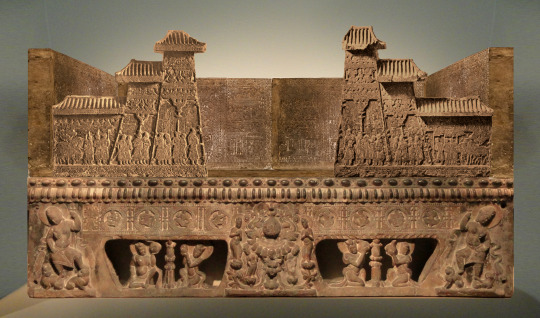


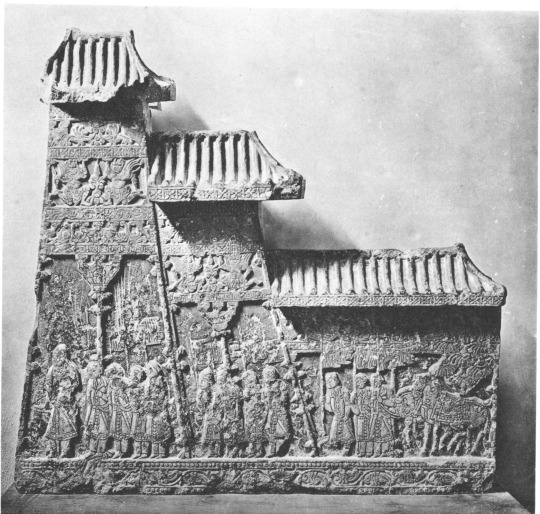







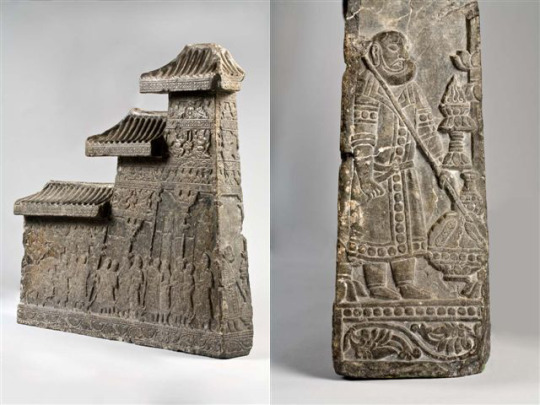
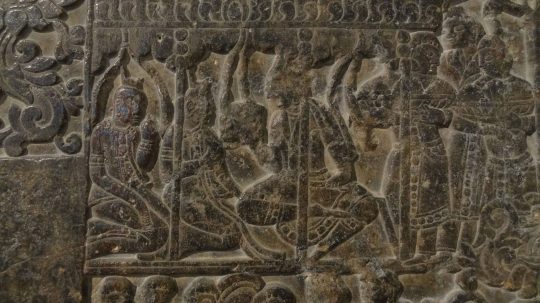

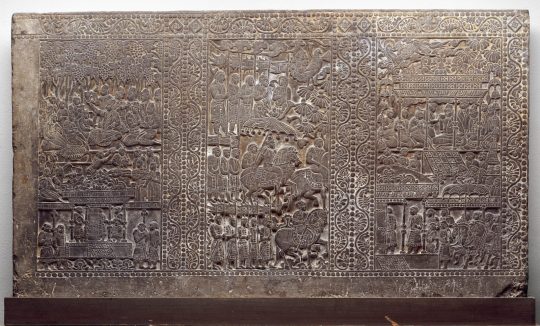

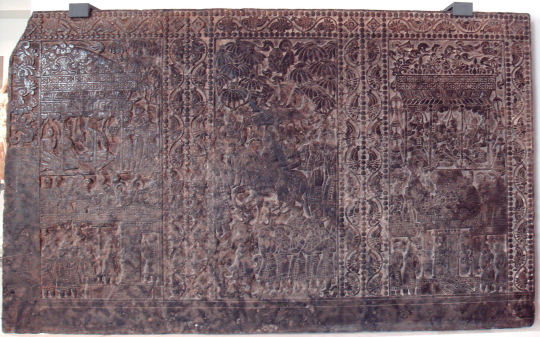

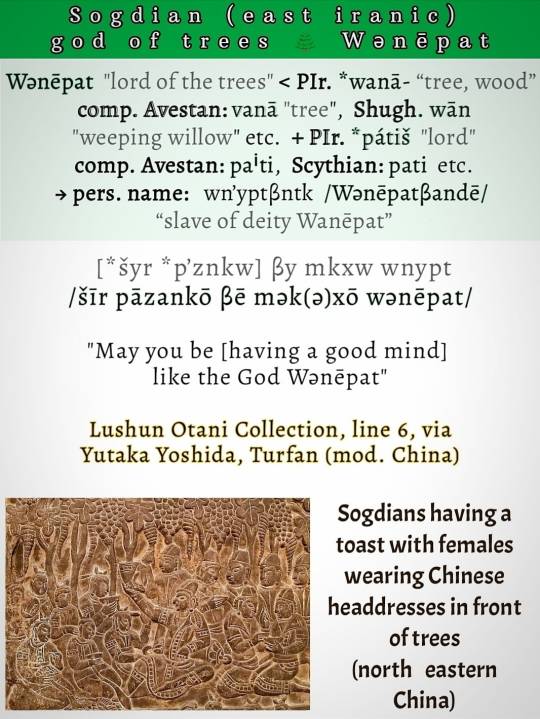
Anyang funerary bed 550-577 CE
"The Anyang funerary bed (Chinese: 安阳北齐石棺), also known locally as the Bed of Ts'ao Ts'ao (from the Chinese hero Cao Cao), is a Chinese funerary couch belonging to a Sogdian merchant and official active in China in the 6th century CE. The tomb was discovered in 1911, and the components of the funerary bed were dispersed among various museums in the world after being offered on the art market. It is thought the funerary bed was excavated in Anyang (ancient Zhangdefu), capital of the Northern Qi dynasty. It is stylically dated to the Northern Qi dynasty (550–577 CE).
There are eight known components of this funerary monument: a dais and two cornices with notched ends, now in the Freer Gallery of Art, a pair of gates, now in the Museum of East Asian Art (Cologne), two rectangular slab in the Boston Museum of Fine Arts, and one slab in the Guimet Museum in Paris.
The funerary bed is important to Sogdian art and culture, as it is decorated with musicians in the typical Sogdian attire and with a Buddhist scene including deities. The ensemble of Sogdian musicians includes two lute players, a flutist, two drummers and a cymbal player, as well as two dancers. Two stretchers once attached to the bed showed what the Chinese called a huxuan wu (胡旋舞), i.e. "Sogdian Whirl dance", which was enormously popular in China, and appears on many Chinese tombs. Tang sources confirm the dance's popularity. It was performed at court by the Tang Chinese emperor Xuanzong and his favorite concubine.
Gustina Scaglia was the first to recognize in 1958 that the pieces scattered in several museums belonged to a single funerary couch made for a member of the Sogdian community in China.
The owner and exact history of the owner of the tomb remain unknown, as the epitaph has been lost.
Sogdian stone funerary beds disappear during the subsequent Tang dynasty period, even though Sogdian influence was probably even more significant in China at that time, possibly due to Imperial restrictions regarding funerary practices."
-taken from Wikipedia
#sogdiana#ancient history#art#antiquities#history#sculpture#statue#museums#archaeology#ancient china#antiquity#anthropology
245 notes
·
View notes